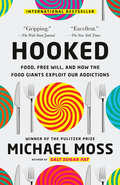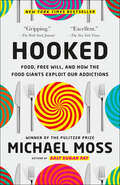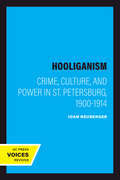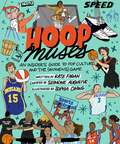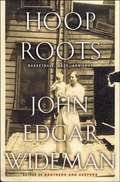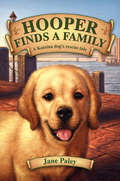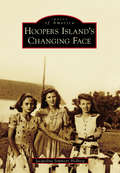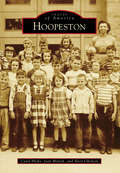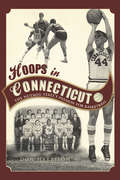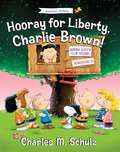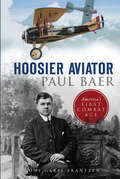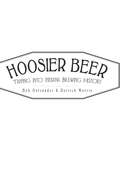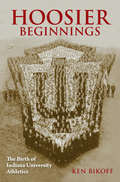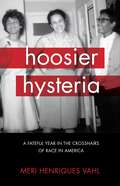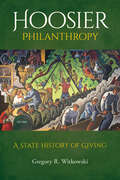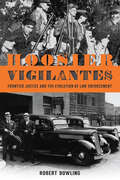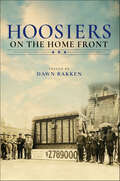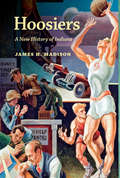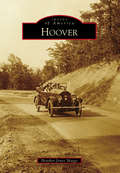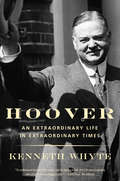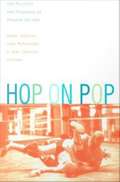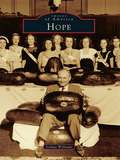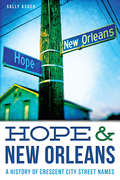- Table View
- List View
Hooked: Food, Free Will, and How the Food Giants Exploit Our Addictions
by Michael MossFrom the #1 bestselling and Pulitzer Prize-winning author of Salt Sugar Fat, the troubling story of how food companies have exploited our most fundamental evolutionary instincts to get us hooked on processed foods.Everyone knows how hard it can be to maintain a healthy diet. But what if some of the decisions we make about what to eat are beyond our control? Is it possible that processed food is addictive, like drugs or alcohol? Motivated by these questions, Pulitzer Prize-winning investigative reporter Michael Moss began searching for answers, to find the true peril in our food. In Hooked, Moss explores the science of addiction and uncovers what the scientific and medical communities--as well as food manufacturers--already know, which is that food can, in some cases, be even more addictive than alcohol, cigarettes, or drugs. Our bodies are hard-wired for sweets, so food manufacturers have deployed fifty-six types of sugar to add to their products, creating in us the expectation that everything should be cloying; we've evolved to prefer convenient meals, so three-fourths of the calories we get from groceries come from ready-to-eat foods. Moss goes on to show how the processed food industry has not only tried to deny this troubling discovery, but exploit it to its advantage. For instance, in a response to recent dieting trends, food manufacturers have simply turned junk food into junk diets, filling grocery stores with "diet" foods that are hardly distinguishable from the products that got us into trouble in the first place. With more people unable to make dieting work for them, manufacturers are now claiming to add ingredients that can effortlessly cure our compulsive eating habits. A gripping account of the legal battles, insidious marketing campaigns, and cutting-edge food science that have brought us to our current public health crisis, Hooked lays out all that the food industry is doing to exploit and deepen our addictions, and shows us what we can do so that we can once again seize control.
Hooked: Food, Free Will, and How the Food Giants Exploit Our Addictions
by Michael MossFrom the #1 New York Times bestselling author of Salt Sugar Fat comes a powerful exposé of how the processed food industry exploits our evolutionary instincts, the emotions we associate with food, and legal loopholes in their pursuit of profit over public health. <P><P>Everyone knows how hard it can be to maintain a healthy diet. But what if some of the decisions we make about what to eat are beyond our control? Is it possible that food is addictive, like drugs or alcohol? And to what extent does the food industry know, or care, about these vulnerabilities? <P><P>In Hooked, Pulitzer Prize–winning investigative reporter Michael Moss sets out to answer these questions—and to find the true peril in our food. Moss uses the latest research on addiction to uncover what the scientific and medical communities—as well as food manufacturers—already know: that food, in some cases, is even more addictive than alcohol, cigarettes, and drugs. Our bodies are hardwired for sweets, so food giants have developed fifty-six types of sugar to add to their products, creating in us the expectation that everything should be cloying; we’ve evolved to prefer fast, convenient meals, hence our modern-day preference for ready-to-eat foods. <P><P>Moss goes on to show how the processed food industry—including major companies like Nestlé, Mars, and Kellogg’s—has tried not only to evade this troubling discovery about the addictiveness of food but to actually exploit it. For instance, in response to recent dieting trends, food manufacturers have simply turned junk food into junk diets, filling grocery stores with “diet” foods that are hardly distinguishable from the products that got us into trouble in the first place. As obesity rates continue to climb, manufacturers are now claiming to add ingredients that can effortlessly cure our compulsive eating habits. <P><P>A gripping account of the legal battles, insidious marketing campaigns, and cutting-edge food science that have brought us to our current public health crisis, Hooked lays out all that the food industry is doing to exploit and deepen our addictions, and shows us why what we eat has never mattered more. <P><P><b>A New York Times Bestseller</b>
Hooliganism: Crime, Culture, and Power in St. Petersburg, 1900-1914 (Studies on the History of Society and Culture #19)
by Joan NeubergerIn this pioneering analysis of diffuse underclass anger that simmers in many societies, Joan Neuberger takes us to the streets of St. Petersburg in 1900-1914 to show us how the phenomenon labeled hooliganism came to symbolize all that was wrong with the modern city: increasing hostility between classes, society's failure to "civilize" the poor, the desperation of the destitute, and the proliferation of violence in public spaces.
Hoop Muses: An Insider's Guide to Pop Culture and the (Women's) Game
by Kate Fagan Seimone Augustus&“In vibrant color and style, Hoops Muses tells the vital stories that celebrate the history and tradition of our game.&” —Sue Bird, WNBA legendHoops Muses is an homage to the game, bringing style and flair to all the details, moments, and people who have shaped the collective world of (women&’s) hoops.Hoops Muses will take us through time – literally. We begin in the future, in 2072, on the night of the WNBA&’s 75th Anniversary, as New York Liberty phenom Jacklyn Jones is paid a visit by one of basketball&’s long-ago (wink, wink) greats. This unlikely duo then goes on a sweeping, roundtrip adventure through basketball history, starting at the very beginning: Springfield, 1891. As the years pass, they learn the roots of the game (think: the first-ever collegiate game between Stanford and Cal, where men scaled the walls for a peek inside, or, the legend of Chicago&’s Club Store Co-Eds, the all-Black barnstorming squad of the 1930s). AND as the early 20th century morphs into modern times, they see the game grow, the milestones reached. On their journey, they learn about the teams and the women (along with a few men) who helped build the foundation on which The Future will be built: -Fort Shaw and the 1904 World Championship -Pat Summitt and the early years of the Lady Vols -Delta State, featuring Margaret Wade and Lusia Harris -Cheryl Miller and Hollywood&’s USC Trojans -UConn-Tennessee and the &“Sliding Doors&” moment that sparked their rivalry Plus, they have front-row seats to a whole lot of quirky, blissful fandom, including … The Movies That Should Have Been WNBA Jam The Moments The Shots To be a (women&’s) hooper is to be part of a long and proud tradition … but one not often celebrated in popular culture. Hoops Muses is here to change that.
Hoop Roots
by John Edgar WidemanWhile presenting a memoir of discovering basketball, novelist Wideman (U. of Massachusetts-Amherst) reveals much about the origins of black basketball in the US.
Hooper Finds a Family
by Jane PaleyHe's endearing. He's funny. He's a survivor. Here comes Hooper, one plucky, spunky dog whose warm spirit and goofy personality are irresistible. Hooper tells his own dramatic rescue tale after being left homeless in the wake of Hurricane Katrina and taking a daring trip from New Orleans to New York to meet his new family. He tells of the terrifying force of Katrina, his trials in the shelter, and being the new dog on the block in a city far from home. As Hooper struggles to find his place, he learns to overcome his fear of water and faces down feisty squirrels as well as the resident bully and top dog in his new neighborhood. In a moving tale of adventure and triumph based on a true story, meet this tenacious puppy who makes an incredible journey in search of home.
Hooper Finds a Family
by Jane PaleyHe's endearing.He's funny.He's a survivor.Here comes Hooper, one plucky, spunky dog whose warm spirit and goofy personality are irresistible. Hooper tells his own dramatic rescue tale after being left homeless in the wake of Hurricane Katrina and taking a daring trip from New Orleans to New York to meet his new family. He tells of the terrifying force of Katrina, his trials in the shelter, and being the new dog on the block in a city far from home. As Hooper struggles to find his place, he learns to overcome his fear of water and faces down feisty squirrels as well as the resident bully and top dog in his new neighborhood. In a moving tale of adventure and triumph based on a true story, meet this tenacious puppy who makes an incredible journey in search of home.
Hoopers Island's Changing Face (Images of America)
by Jacqueline Simmons HedbergOne of the oldest settlements in Maryland is a small tidewater community on the Eastern Shore named Hoopers Island. Land was patented there in 1659, and families who owned the original plantations have continued to reside there for generations. Economic changes in the 18th century contributed to both isolation and a unique style of life. By the late 19th century, farmers had turned to the sea to make their living, and the community became known for its seafood. Island watermen continue to harvest the products of the Chesapeake, and local factories deliver seafood daily throughout the region. Hoopers Island today, however, has a different look than it did even 50 years ago. The high school has been transformed into a fine restaurant, and an old marine railway has become a modern boatyard and marina. While the native population has declined, others have retired to the area, and the island is becoming a vacation destination.
Hoopeston (Images of America)
by Carol Hicks Nora Gholson Jean MinickHoopeston is the second-largest rural town in northern Vermilion County. It was founded in 1871 but was not incorporated until 1874. The area was originally settled as three towns: Hoopeston, North Hoopeston, and Leeds. Today, it has the distinction of being the only town by this name in the United States. Big Ten basketball coach Thad Matta, a former graduate of Hoopeston High School, and Frank Gustine, who played for the Pittsburgh Pirates when he turned 19 in 1939, are both local legends. Jean Hixson earned her pilot's license at 18 years of age and went on to serve with the Women's Airforce Service Pilots (WASP) during World War II and was a member of the NASA's Mercury 13 astronaut program in 1961. Hoopeston is the home of the National Sweetcorn Festival and the National Sweetheart Pageant, a stepping-stone to the Miss America Pageant. To date, nine young women who have competed in Hoopeston's National Sweetheart Pageant have gone on to win the Miss America Pageant.
Hoops in Connecticut: The Nutmeg State's Passion for Basketball (Sports)
by Don HarrisonHome to both the University of Connecticut's men's and women's NCAA championship teams as well as the Connecticut Sun WNBA team, this small state has made a name for itself in basketball. Infatuation with the sport started here in 1896 with the first intercollegiate game between Yale and Wesleyan Universities. The roster of Connecticut's round ball greats includes Naismith Hall-of-Famer Calvin Murphy; NBA stars Vin Baker, Marcus Camby, Charles Smith, the late John Williamson, Johnny Egan and John Bagley; and Harlem Globetrotter Alvin Clinkscales. Award-winning sportswriter Don Harrison wows fans with stories of the Nutmeg State's most notable players and coaches through personal interviews and firsthand accounts.
Hooray for Liberty, Charlie Brown! (Peanuts Great American Adventure)
by Charles M. Schulz Tom BrannonThe Peanuts gang has built a wonderful new tree house! Everyone wants to share it-everyone except Lucy, who takes over the tree house and says everyone has to obey her. But Charlie Brown and the others don’t want to be ruled by Lucy! Luckily, Linus remembers how the American colonists stood up to the British King a long time ago with the Declaration of Independence. Can the Peanuts gang learn from the colonists and stand up to Lucy?
Hoosier Aviator Paul Baer: America’s First Combat Ace (Military)
by Tony Garel-FrantzenIndiana native Paul Baer was an American pilot of many firsts. Born into a modest midwestern family in the late 1800s, Baer grew up short and shy in Fort Wayne. Not short on ambition, he volunteered to join a new breed of combatant: the fighter pilot. Dogfighting in the skies over France during World War I, Baer earned a giant reputation as the first-ever American to shoot down an enemy plane and the first to earn the title of "combat ace" for earning five victories--before being shot down himself. Author Tony Garel-Frantzen celebrates the 100th anniversary of Baer's aerial heroics with rarely seen images, a previously unpublished POW letter from Baer himself and a look at the restless raptor's life of roaming.
Hoosier Beer: Tapping into Indiana Brewing History (American Palate)
by Bob Ostrander Derrick MorrisCrack open a bottle of Champagne Velvet and dive into the first complete history of brewing in Indiana, where the beer history is as old as the state itself. More than three hundred breweries have churned out the good stuff for thirsty Hoosiers, and this city-by-city guide gives readers a sample of every spot, allowing time to savor the flavor while sharing the hidden aspects, like the brave and hearty brewers who assisted the Underground Railroad and survived Prohibition. The unmistakable Hoosier personality and spirit shine in the classic labels and advertisements, many of which are displayed here in vibrant color. Join Indiana beer enthusiasts Bob Ostrander and Derrick Morris of hoosierbeerstory.com on a pub crawl through this state's proud beer history.
Hoosier Beginnings: The Birth of Indiana University Athletics (Well House Books)
by Ken BikoffHoosier Beginnings tells the story of Indiana University athletics from its founding in 1867 to the interwar period. Crammed full of rare images and little-known anecdotes, it recounts how sport at IU developed from its very first baseball team, made up mostly of local Bloomington townsfolks, to the rich and powerful tradition that is the "Hoosier" legacy. Hoosier Beginnings uncovers fascinating stories that have been lost to time and showcases how Indiana University athletics built its foundation as a pivotal team in sports history. Learn about the fatal train collision that nearly stopped IU athletics in its tracks; IU's first African American football player; the infamous Baseball Riot of 1913; how a horde of students grabbed axes and chopped down 200 apple trees to make way for a new gymnasium; and the legendary 1910 football team that didn't allow a single touchdown all season—but still lost a game. Most importantly, it attempts to answer the burning question, where did the "Hoosiers" get their mysterious name?
Hoosier Hysteria: A Fateful Year in the Crosshairs of Race in America
by Meri Henriques VahlIndiana University, September 1963. Meri Henriques, a naïve freshman from New York, arrives on campus thinking she&’s about to enroll at an idyllic Midwestern college. Instead, she discovers a storm is brewing. An intriguing cast of characters inhabits Meri&’s new and often troubled world: Katherine &“Pixie&” Gates, Meri&’s charming and quirky roommate; Rachel, brilliant and sarcastic fellow New Yorker; Daniel, a tough radical with a tender heart; folk singer Derek Stone, Meri&’s crush; and Shennandoah Waters, a white coed who only dates black men or exotic foreigners, much to her ultra-conservative parents&’ horror. Over the course of Meri&’s first year at college, tragedy strikes twice: John Kennedy is assassinated, and a young, black IU basketball player is castrated and thrown into a ditch—murdered for dating a white coed. And finally, that year&’s commencement ceremonies bring an infamous symbol of white supremacy to campus, endangering anyone who dared to protest—thrusting Meri into the middle of violent and escalating racial tensions. Vivid and compelling, Hoosier Hysteria is a timely story of prejudice and political unrest that, today more than ever before, must be told.
Hoosier Philanthropy: A State History of Giving
by James H. Madison Peter Weber Nicole Etcheson David P. King Xiaoyun Wang Tyrone McKinley Freeman William H. Schneider Katherine Badertscher Clay Robbins Ruth C. Crocker James J. Connelly Paul C. Pribbenow Caitlin Crowley Elizabeth J. Van Allen Chen Ji Amanda Koch Ruth K. Hansen Philip D. ByersThe first in-depth history of philanthropy in Indiana. Philanthropy has been central to the development of public life in Indiana over the past two centuries. Hoosier Philanthropy explores the role of philanthropy in the Hoosier state, showing how voluntary action within Indiana has created and supported multiple visions of societal good. Featuring 15 articles, Hoosier Philanthropy charts the influence of different types of nonprofit Hoosier organizations and people, including foundations, service providers, volunteers, and individual donors.
Hoosier Vigilantes: Frontier Justice and the Evolution of Law Enforcement (True Crime)
by Robert BowlingThe story of the intersection between vigilantism and law enforcement In frontier Indiana, vigilantism was a grim necessity. Beginning with the vigilance committees of the 1860s that lynched the Reno Gang and the Knights of the Golden Circle, who plotted to assassinate Governor Morton, the Hoosier State was a hotbed for citizens taking the law into their own hands. Later groups such as the White Caps enforced their own moral code, while the state legislature sanctioned the Horse Thief Detective Association and the Banking Vigilantes. Chronicling the vigilante groups that operated in Indiana, author Robert Bowling explores the evolution of law enforcement from the lone marshal on the frontier to the birth of the modern police department and the Indiana State Police.
Hoosiers on the Home Front
by Dawn BakkenWars are fought on the home front as well as the battlefront. Spouses, family, friends, and communities are called upon to sacrifice and persevere in the face of a changed reality. Hoosiers on the Home Front explores the lives and experiences of ordinary Hoosiers from around Indiana who were left to fight at home during wartimes. Drawn from the rich holdings of the Indiana Magazine of History, a journal of state and midwestern history published since 1905, this collection includes original diaries, letters and memoirs, and research essays—all focused on Hoosiers on the home front of the Civil War through the Vietnam War. Readers will meet, among others, Joshua Jones of the 19th Indiana Volunteer Regiment and his wife, Celia; Attia Porter, a young resident of Corydon, Indiana, writing to her cousin about Morgan's Raid; Civil War and World War I veterans who came into conflict over the Indianapolis 500 and Memorial Day observances; Virginia Mayberry, a wife and mother on the World War II home front; and university students and professors—including antiwar activist Howard Zinn and conservative writer R. Emmett Tyrrell Jr.—clashing over the Vietnam War.Hoosiers on the Home Front offers a compelling glimpse of how war impacts everyone, even those who never saw the front line.
Hoosiers: A New History of Indiana
by James H. MadisonThe story of this Midwestern state and its people, past and present: &“An entertaining and fast read.&” ―Indianapolis Star Who are the people called Hoosiers? What are their stories? Two centuries ago, on the Indiana frontier, they were settlers who created a way of life they passed to later generations. They came to value individual freedom and distrusted government, even as they demanded that government remove Indians, sell them land, and bring democracy. Down to the present, Hoosiers have remained wary of government power and have taken care to guard their tax dollars and their personal independence. Yet the people of Indiana have always accommodated change, exchanging log cabins and spinning wheels for railroads, cities, and factories in the nineteenth century, automobiles, suburbs, and foreign investment in the twentieth. The present has brought new issues and challenges, as Indiana&’s citizens respond to a rapidly changing world. James H. Madison&’s sparkling new history tells the stories of these Hoosiers, offering an invigorating view of one of America&’s distinctive states and the long and fascinating journey of its people.
Hoover (Images of America)
by Heather Jones SkaggsThe community of Hoover began as a seed planted in the young mind of William Henry Hoover Sr. (1890-1979). Hoover's father dreamed of a city for working families, and the younger Hoover used this vision as a road map to build a strong municipality that grew with business, community, and family living. Through hard work and determination, Hoover opened Employers Mutual of Alabama's first office in Birmingham in 1922. He later founded the early town of Hoover in 1954 and in 1958 moved his company to the area that would be incorporated in 1967 as the city of Hoover. Several nearby communities are older than the city itself. Images of America: Hoover looks at Bluff Park, Shades Mountain, Rocky Ridge, Green Valley, and Patton (Patton's) Chapel as some of the early areas where Hoover's great story began.
Hoover, Blacks, and Lily-Whites: A Study of Southern Strategies (Unc Press Enduring Edition Ser.)
by Donald J. LisioFor more than fifty years, Hoover has been viewed as a lily-white racist who attempted to revitalize Republicanism in the South by driving blacks from positions of leadership at all party levels. Lisio demonstrates that this view is both inaccurate and incomplete, that Hoover hoped to promote racial progress. He shows that Hoover's efforts to reform the southern state parties led to controversy with lily-whites as well as blacks in both the North and the South.Originally published in 1985.A UNC Press Enduring Edition -- UNC Press Enduring Editions use the latest in digital technology to make available again books from our distinguished backlist that were previously out of print. These editions are published unaltered from the original, and are presented in affordable paperback formats, bringing readers both historical and cultural value.
Hoover: An Extraordinary Life in Extraordinary Times
by Kenneth WhyteThe definitive biography of Herbert Hoover, one of the most remarkable Americans of the twentieth century--a revisionist account that will forever change the way Americans understand the man, his presidency, and his battle against the Great Depression. A poor orphan who built a fortune, a great humanitarian, a president elected in a landslide and then routed in the next election, arguably the father of both New Deal liberalism and modern conservatism--Herbert Hoover is also one of our least understood presidents, conventionally seen only as a heartless failure for his handling of the Great Depression. Kenneth Whyte fully captures this rich, dramatic life: from Hoover's difficult childhood to his meteoric business career, his work saving hundreds of thousands of lives during World War I and after the 1927 Mississippi floods, his presidency, his painful defeat by Roosevelt, and his return to grace as Truman's emissary to help European refugees after World War II. Whyte brings to life Hoover's complexity and contradictions--his modesty and ambition, ruthlessness and extreme generosity--as well as his political legacy. Here is the epic, poignant story of the poor boy who became the most accomplished figure of his time, who worked ceaselessly to fight the Depression yet became the public face of America's greatest economic crisis. Here, for the first time, is the definitive biography that captures the full scale of this extraordinary life.
Hop on Pop: The Politics and Pleasures of Popular Culture
by Henry Jenkins Tara Mcpherson Jane ShattucHop on Pop showcases the work of a new generation of scholars--from fields such as media studies, literature, cinema, and cultural studies--whose writing has been informed by their ongoing involvement with popular culture and who draw insight from their lived experiences as critics, fans, and consumers. Proceeding from their deep political commitment to a new kind of populist grassroots politics, these writers challenge old modes of studying the everyday. As they rework traditional scholarly language, they search for new ways to write about our complex and compelling engagements with the politics and pleasures of popular culture and sketch a new and lively vocabulary for the field of cultural studies. The essays cover a wide and colorful array of subjects including pro wrestling, the computer games Myst and Doom, soap operas, baseball card collecting, the Tour de France, karaoke, lesbian desire in the Wizard of Oz, Internet fandom for the series Babylon 5, and the stress-management industry. Broader themes examined include the origins of popular culture, the aesthetics and politics of performance, and the social and cultural processes by which objects and practices are deemed tasteful or tasteless. The commitment that binds the contributors is to an emergent perspective in cultural studies, one that engages with popular culture as the culture that "sticks to the skin," that becomes so much a part of us that it becomes increasingly difficult to examine it from a distance. By refusing to deny or rationalize their own often contradictory identifications with popular culture, the contributors ensure that the volume as a whole reflects the immediacy and vibrancy of its objects of study. Hop on Pop will appeal to those engaged in the study of popular culture, American studies, cultural studies, cinema and visual studies, as well as to the general educated reader. Contributors. John Bloom, Gerry Bloustein, Aniko Bodroghkozy, Diane Brooks, Peter Chvany, Elana Crane, Alexander Doty, Rob Drew, Stephen Duncombe, Nick Evans, Eric Freedman, Joy Fuqua, Tony Grajeda, Katherine Green, John Hartley, Heather Hendershot, Henry Jenkins, Eithne Johnson, Louis Kaplan, Maria Koundoura, Sharon Mazer, Anna McCarthy, Tara McPherson, Angela Ndalianis, Edward O'Neill, Catherine Palmer, Roberta Pearson, Elayne Rapping, Eric Schaefer, Jane Shattuc, Greg Smith, Ellen Strain, Matthew Tinkhom, William Uricchio, Amy Villarego, Robyn Warhol, Charles Weigl, Alan Wexelblat, Pamela Robertson Wojcik, Nabeel Zuberi
Hope
by Joshua WilliamsLocated in the southwest corner of Arkansas, in one of the oldest counties of the state, the town of Hope has reflected the industrial vision of the New South since 1873 when the first lots were sold by the Cairo and Fulton Railroad Company. Hope has been home to nationally known politicians Bill Clinton and Mike Huckabee; acclaimed musicians like Patsy Montana; entrepreneur Paul Klipsch of Klipsch Speakers; and the farmer of the f44-year world-record watermelon, O. D. Middlebrooks. From thriving banks and local businesses to brickyards and handle factories, the people and places of Hope reflect the industrial nature and vision of a New South railroad town combined with the charm of small-town America.
Hope & New Orleans: A History of Crescent City Street Names (Landmarks)
by Sally AsherNew Orleans is a city of beautiful contradictions, evidenced by its street names. New Orleans crosses with Hope, Pleasure and Duels. Religious couples with Nuns, Market and Race. Music, Arts and Painters are parallel. New Orleans enfolds its denizens in the protection of saints, the artistry of Muses and the bravery of military leaders. The city's street names are inseparable from its diverse history. They serve as guideposts as well as a narrative that braid its pride, wit and seedier history into a complex web that to this day simultaneously joins and shows the cracks within the city. Learn about Bourbon's royal lineage, the magnitude of Napoleon's influence, how Tchoupitoulas's history is just as long and vexing as its spelling and why mispronouncing such streets as Burgundy, Calliope and Socrates doesn't mean you are incorrect--it just means you are local Told with precision and photos as vibrant, irreverent and memorable as La Nouvelle Orleans itself, author Sally Asher delivers an updated and reinvented look at the city that care forgot.
